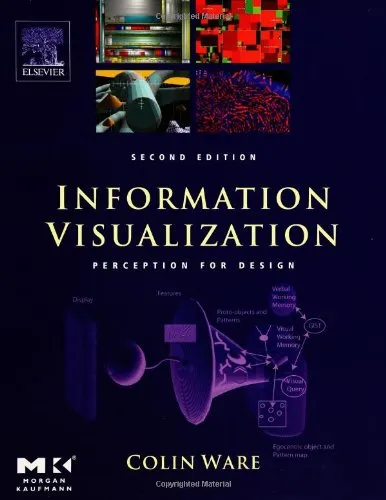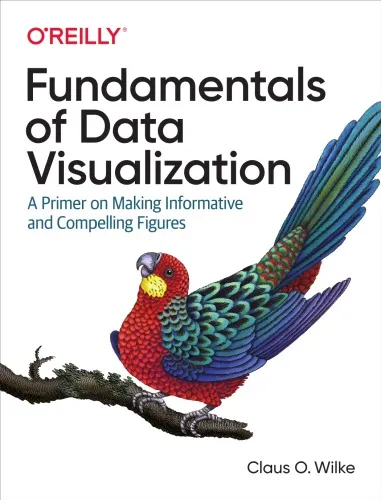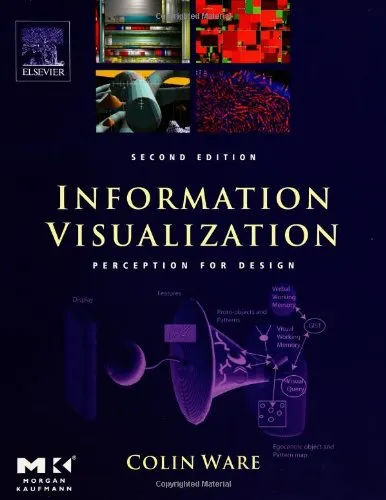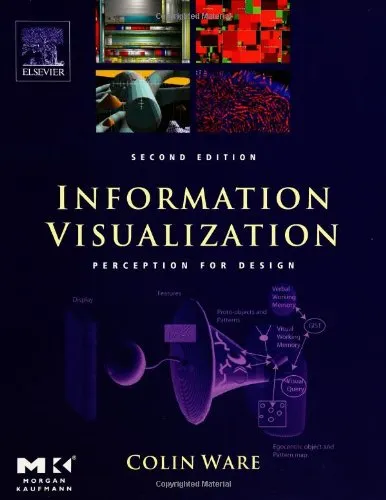Information Visualization, Second Edition: Perception for Design
4.5
Reviews from our users

You Can Ask your questions from this book's AI after Login
Each download or ask from book AI costs 2 points. To earn more free points, please visit the Points Guide Page and complete some valuable actions.Related Refrences:
Introduction to 'Information Visualization, Second Edition: Perception for Design'
'Information Visualization, Second Edition: Perception for Design' by Colin Ware is a cornerstone text for anyone involved in making sense of complex information through visual means. Rooted in cognitive science and perceptual psychology, this book explores the rich interplay between human perception and design, offering invaluable insights for professionals in fields ranging from data science to user experience design. Updated in its second edition, it remains an indispensable guide for both beginners and seasoned practitioners aiming to optimize how visual information is presented and understood.
Detailed Summary of the Book
The book delves deep into the intersection of human perception and information visualization, asking the fundamental question: how can we design visual representations of data in a way that aligns with the strengths and limitations of the human visual and cognitive systems? Divided into carefully structured sections, the text introduces foundational concepts related to human visual perception, including attention, pattern recognition, color theory, and spatial relationships.
Early chapters explore how the human brain processes visual information, detailing the sciences of perception and attention. Understanding how people notice patterns, focus on objects, and interpret colors is critical to designing effective visualizations. The book then transitions into practical facets of visualization, such as best practices for creating graphs, charts, maps, and interactive designs. Each design principle is underscored by real-world applications and scenarios, making it relevant across diverse industries and contexts.
The strength of this book lies in the way it bridges theory and practice, equipping readers with a scientific understanding of visual perception while also providing them with actionable strategies. By combining cutting-edge research with case studies, Ware ensures that readers grasp not just the "what" of information visualization, but also the "why" behind effective design choices.
Key Takeaways
- The human visual system plays a pivotal role in how information is processed and understood, and visualization design must work in harmony with these cognitive processes.
- Color, layout, patterns, and spatial positioning greatly influence how effectively we perceive and interpret data.
- Interactive visualizations allow users to explore complex data dynamically, making it easier to uncover insights.
- Good visualizations aren't just about aesthetics—they must prioritize clarity, simplicity, and relevance to the target audience.
- The principles of perception are universally applicable, whether you're designing a dashboard, an infographic, or a dense scientific data representation.
Famous Quotes from the Book
"To design effective visualizations, one must first understand how perception works—only then can design guide the viewer’s understanding."
"Visualization should not demand effort from viewers; it should uncover the underlying structures and patterns effortlessly."
"A well-designed visualization is not just a picture—it is a cognitive tool that enhances human comprehension."
Why This Book Matters
In an age where data has become ubiquitous, the challenge lies not in gathering information but in presenting it in ways that are clear, engaging, and actionable. This book addresses this challenge by emphasizing how design rooted in perceptual psychology can transform raw data into human-understandable visual narratives.
Whether you're a data analyst, designer, scientist, or business professional, the principles in this book can be universally applied to improve communication, decision-making, and storytelling. Unlike other books that only focus on software or tools, 'Information Visualization, Second Edition' prioritizes a knowledge-based approach to visualization, ensuring the lessons remain relevant even as visualization tools continue to evolve. This focus on principles rather than tools makes it a timeless guide.
Ultimately, Colin Ware reminds us that visualization is not just about presenting data; it is about empowering people to see, understand, and act. This book inspires a deeper appreciation of the design process and equips readers with the scientific underpinnings needed to excel in the increasingly vital field of information visualization.
Free Direct Download
You Can Download this book after Login
Accessing books through legal platforms and public libraries not only supports the rights of authors and publishers but also contributes to the sustainability of reading culture. Before downloading, please take a moment to consider these options.
Find this book on other platforms:
WorldCat helps you find books in libraries worldwide.
See ratings, reviews, and discussions on Goodreads.
Find and buy rare or used books on AbeBooks.
1239
بازدید4.5
امتیاز0
نظر98%
رضایتReviews:
4.5
Based on 0 users review
Questions & Answers
Ask questions about this book or help others by answering
No questions yet. Be the first to ask!










![Good Charts, Updated and Expanded: The HBR Guide to Making Smarter, More Persuasive Data Visualizations [Team-IRA]](https://s3.refhub.ir/images/thumb/Good_Charts__Updated_and_Expanded__The_HBR_Gu_31517.webp)


